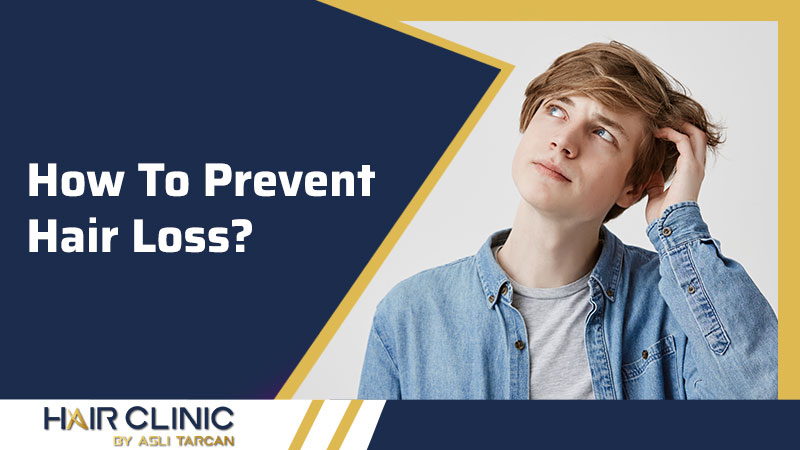How To Prevent Hair Loss? Usually, we can expect to lose about 100 hairs every day. It’s part of the natural balance of your hair biology. Your hair follicles go through a cycle of growth, transition, and rest – but for many women, their follicles seem to take a long time to rest. When the growth cycle stops and more hair fall out then it grows, hair loss occurs. In this article, we will learn how to prevent hair loss, which can be used to prevent hair loss.
Many women suffer silently with hair loss, changing their hairstyles to cover the fine points. However, women’s hair loss is not at all uncommon. In fact, more than half of women will experience noticeable hair loss on the top of their head as they reach menopause.
The way it affects women is different from the way it affects men – this is because many women believe that their hair communicates their femininity, personality, and attractiveness to the world. Learning how to prevent hair loss is vital for many women to regain their confidence, quality of life, and emotional well-being.
The hair growth cycle
Hair fibers begin to appear in tiny skin pockets called follicles. Their life cycles include three stages of development: the anagen, the catagen, and the telogen.
- Active growth or regeneration stage Your hair grows for two to seven years during the regeneration phase. For maximum growth, your hair should stay in this phase for as long as possible. Often, genetics will limit it.
- Transition or progenitor stage This two to the three-week stage is a transitional phase between the anagen and telogen phases. During this short period, your hair follicle is pushed into your scalp and disconnected from the blood source.
- Resting or telogen phase No new cell division occurs during the telogen phase for up to nine months. This means that the length of your locks remains the same at this stage. The dermal follicle of the follicle uses this stage to “refill” the hair follicle with growth cells in preparation for the regeneration phase. Eventually, the remaining hair falls out and new hair grows through the follicle.
Why hair loss occurs
There is no cause for hair loss. For example, there are up to 30 medical conditions that can cause it, in addition to:
- Lifestyle factors
- Stress
- Genetics
- Diet
- Drugs and medical treatments
- Tight hairstyles
- Hair products that contain harsh ingredients
Hormone imbalances associated with aging and thyroid conditions can also cause hair loss.
Hair loss and aging
Age-related changes in dihydrotestosterone (DHT) levels can lead to FPHL or androgenetic alopecia. DHT is a male hormone found mainly in our blood but is also common in sweat and sebum. It is a testosterone derivative that binds to the hair follicles to cause FPHL. In addition to interrupting the growth cycle in some of your follicles, DHT shrinks the rest, forcing them to push thin threads.
FPHL differs from men’s experience in hair loss and reflux. As women, we first encounter a slight thinning, then a larger than normal midline, and finally hair loss all over our scalp. Female pattern baldness varies between women due to inequalities in hormone levels and genetics. If your mom or sisters have FPHL, you may want to try it as well.
How to prevent hair loss
Although thinning hair is a natural part of the aging process, there are steps you can take to prevent or even reverse hair loss. Some of these strategies work by stimulating your follicles back to their active growth phase, causing new hair. Others aim to prevent hair loss from the first place.
Consider the following hair loss solutions:
- Minoxidil Minoxidil is a synthetic drug that is believed to promote hair growth by dilating blood vessels. This can allow more blood, oxygen, and nutrients to reach the follicles. It can shorten the telogen phase, causing these hairs to loosen and be replaced by thicker strands in a new regeneration phase.
- Anti-androgens Prescription androgen drugs such as spironolactone can prevent hair loss caused by excessive testosterone and DHT. They do this either by reducing the production of these hormones or by eliminating their effects. Talk to your doctor about possible side effects.
- Spray protect your hair To avoid pulling your hair from the roots, brush gently and avoid tight braids or ponytails.
Foods to prevent hair loss
Hair loss has become a very common and widespread problem in the modern world. Excessive pollution, spoiled food, stress, stress at work, poor sleep quality, etc. are some of the many reasons behind hair loss. All of these factors, along with others such as hereditary hair loss, age, hormonal imbalance, etc. contribute to hair loss that is becoming more common and youthful, destroying the myth that it could only happen to the elderly.
A healthy diet plays an important role in the complete well-being of the body. A nutritious and balanced diet could help maintain a variety of health-related problems, including hair loss. Recent studies and experiments conducted at various institutes around the world have led scientists to believe that certain foods can help prevent hair loss. Here is a look at foods that can prevent hair loss.
Oatmeal
Oats are rich in β-glucans, a type of soluble fiber. Both male pattern baldness and female pattern baldness are often associated with insulin resistance. Due to its high fiber content, oatmeal is a food that helps improve the body’s sensitivity to insulin.
Sweet potato
Sweet potatoes are a rich source of iron, copper, potassium, magnesium, and β-carotene. Beta-carotene helps cells grow, prevents thinning hair, and can even reduce the dull appearance of hair. They also have antioxidant properties, which can help reduce hair loss due to oxidative stress.
Brazilian peanuts
Brazil nuts are an excellent source of selenium, a metal that can enhance hair growth. Selenium is involved in hair growth. The newly formed hair gets selenium after taking trace elements from the blood.
Vegetables with leaves
Leafy green vegetables have a high nutritional value. It is rich in iron, potassium, vitamin C, vitamin K, and calcium. Iron is an important nutrient that helps hair cells stay active and healthy. Vegetables such as spinach, lettuce, broccoli, cabbage, etc. should be included in the diet to prevent hair loss.
There are some things that are more annoying for most of us than finding a growing amount of hair in the sewer or an ever-expanding section of hair. Aging is inevitable and now that you understand how it affects your hair and scalp, you can do something about it. Make healthy lifestyle choices and use holistic hair and scalp solutions from our clinic. The doctors of our clinic will offer you professional solutions on how to prevent hair loss.



